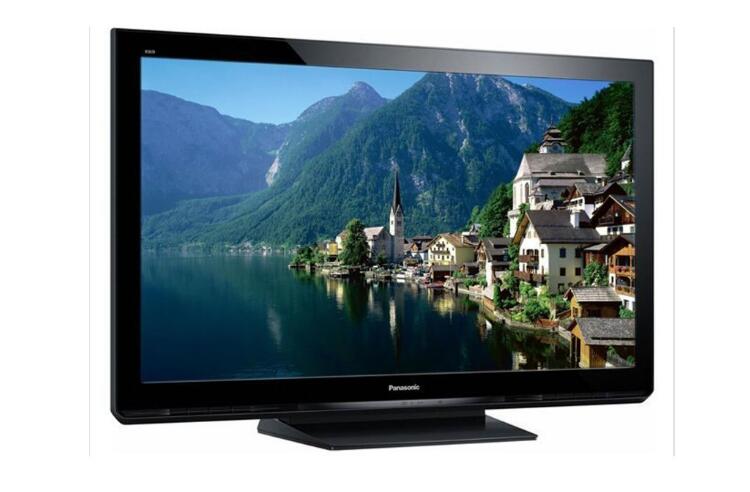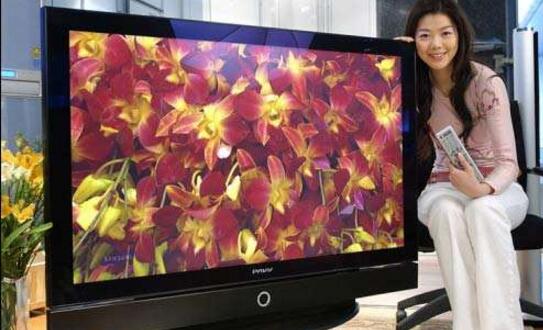**Plasma TV Concept**
The full name of a plasma TV is Plasma Display Panel, commonly referred to as a plasma TV in Chinese. It operates by injecting a mixture of gases between two ultra-thin glass panels and applying voltage to cause the phosphor to emit light. Compared to CRT (Cathode Ray Tube) displays, plasma TVs offer higher resolution, larger screen sizes, ultra-slim designs, vibrant colors, and rich image quality. When compared to LCDs (Liquid Crystal Displays), plasma TVs provide brighter images, better contrast ratios, wider viewing angles, and more vivid visuals.
Plasma display technology comes in two main types: DC-type PDPs, where electrodes are directly in contact with the gas, and AC-type PDPs, which have electrodes covered by a dielectric layer. There are three primary color PDP configurations that have been researched and developed: single-substrate (also known as surface discharge) AC PDP, dual (counter-discharge) AC PDP, and pulse storage DC PDP.

**How Plasma TV Works**
A plasma display panel is a type of display that uses gas discharge to produce images. The screen is made up of thousands of tiny plasma tubes, each acting as a pixel. Each pixel contains three different colored illuminators—red, green, and blue. By combining these colors in various intensities, the TV can create a wide range of colors and shades, similar to how CRT displays work.
At the core of each plasma tube is a plasma, which is a gas composed of free-moving ions (charged atoms) and electrons (negatively charged particles). Normally, gas molecules are neutral, meaning they have an equal number of protons and electrons. However, when a high voltage is applied, some electrons are knocked loose, creating an imbalance and forming ions. As current flows through the plasma, the charged particles move toward each other, colliding and exciting the gas atoms, which then emit light.
This process is similar to how fluorescent lights work. In a plasma TV, the gas inside each tube is typically a mix of helium and neon. When these atoms are excited, they emit ultraviolet light, which is invisible to the human eye. This UV light then excites the phosphor coating on the inner surface of the glass panels, causing it to glow and produce visible light.

**Plasma Screen Display Principle**
The way a plasma screen lights up is similar to that of a fluorescent lamp. Each plasma tube acts as a basic pixel, and the entire screen is built using glass as a base material. These glass panels are spaced apart and sealed together to form individual discharge chambers. When a voltage is applied to the electrodes, a plasma discharge occurs in the gas mixture inside the chamber, producing ultraviolet rays. These UV rays then strike the phosphor coating, which emits visible light, forming the image on the screen.
Inside a plasma TV, several key components work together:
- **Power Board**: Provides power to the screen, motherboard, and other internal modules.
- **X Driver Board**: Generates and supplies driving signals to the X electrode based on timing signals from the logic board.
- **Y Driver Board**: Generates and supplies driving signals to the Y electrode based on timing signals from the logic board.
- **Logic Board**: Processes incoming video signals, generates addressing drive signals, and sends them to the X, Y driver boards, and address boards.
- **Logic BUFFER Board (E, F, G)**: Converts data and control signals from the logic board into signals compatible with the COF.
- **YBUFFER Board (Upper and Lower)**: Transmits scanning signals from the Y driver board to the screen, divided into upper and lower sections.
- **COF (Chip on Film)**: Converts signals from the logic buffer board into address signals for the screen.
- **FPC (Flexible Printed Circuit)**: Connects the scan signal from the Y-BUFFER board to the Y-scan electrode on the screen.
Understanding these components helps in troubleshooting and maintaining a plasma TV effectively. While plasma TVs have largely been replaced by LED and OLED technologies, their unique features still make them a fascinating subject for study and repair.
Lost Mary Vape
Lost Mary OS5000 Disposable Vape wholesale,hot sale style in the market .similar elf bar5000. fashion design.Lost Mary 5000 puff rechargeable vapes, designed by ElfBar, provide a battery indicator that allows vapers to check on power levels while they are vaping. Green (high battery), blue (medium battery), and red (low battery) LED colors display the amount of charge left in the 650mAh battery.
From the makers of Elf Bar, discover new amazing flavors where you'll surely find one of your next favorites with the Lost Mary Disposable Device. Lasting up to 5000 puffs, the device features a rechargeable USB Type-C port and even an LED battery life indicator. The disposable vape comes pre-filled with 50mg nicotine salt e-juice and comes in a variety of different tasty flavors.
Elf Bar Lost Mary OS5000 Puff Vape Features in Mesh Coil & Battery Indicator, Offers in an Oval-Shaped Mouthpiece and Enough Airflow for a Decent MTL.
Lost Mary OS5000 Flavors,Lost Mary OS5000 Vape,Elf Bar Lost Mary,Lost Mary Vape,Lost Mary Disposable,Lost Mary BM5000
Shenzhen Ousida Technology Co., Ltd , https://en.osdvape.com